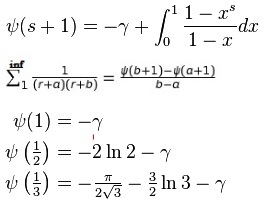Summations can be easy!
n = 0 ∑ ∞ ( 2 + ∫ 0 n ( 1 8 x 2 + 2 6 x + 9 ) d x n ) = ln ( b a ) − d c π
Find: a + b + c + d + 5 .
Details and Assumptions:
∙ All the constants in the RHS are positive integers. All fractions are in reduced form (co-prime). d is a square free integer.
This question is part of the set Best of Me .
The answer is 40.00.
This section requires Javascript.
You are seeing this because something didn't load right. We suggest you, (a) try
refreshing the page, (b) enabling javascript if it is disabled on your browser and,
finally, (c)
loading the
non-javascript version of this page
. We're sorry about the hassle.
2 solutions
Great job +1!
n = 0 ∑ ∞ 6 n 3 + 1 3 n 2 + 9 n + 2 n
n = 0 ∑ ∞ ( 3 n + 2 ) ( 2 n + 1 ) ( n + 1 ) n
Frankly i used wolfram alpha after this step, could u help me after applying partial fraction @Samarpit Swain
@Tanishq Varshney Once you get decompose the sum into ⎝ ⎜ ⎛ n + 1 1 − n + 2 1 1 ⎠ ⎟ ⎞ − 2 ⎝ ⎜ ⎛ n + 1 1 − n + 3 2 1 ⎠ ⎟ ⎞
I used the series expansion of Ψ ( x ) and a few more properties of digamma function to get: Ψ ( 1 / 2 ) − γ − 2 Ψ ( 2 / 3 ) which gives the desired results. I apologize for brevity. I am caught up in a lot of work. I will give the detailed solution along with some of my own generalization soon:)
all is easy if u know the method...use this and see the magic of digamma